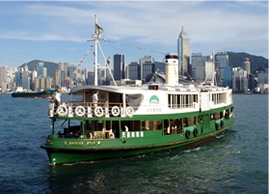 A Star Ferry |
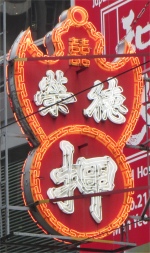 Traditional Pawn Broker Sign |
Our plan was to head up to the Sheung Wan, one of the older districts in the city, where much is as it was many years ago. We would then work our way back across the more modern business oriented zones.
The Star Ferries are worthy of a mention at this point. The journey from Kowloon to Hong Kong Island is a sheer delight when travelling on a Star Ferry, the main link from Tsim Sha Tsui to Central. These green-and-white, oval-shaped, double-decker ferries have been plying across Victoria Harbour since 1898. They must provide one of the most dramatic, stunning commutes in the world. At night, festively strung with lights, with a backdrop of twinkling neon lights and golden glitter reflecting on the lapping waters, it would provide a wonderfully romantic journey. Offering the cheapest therapy in town, few people disembark in anything but the lightest of moods.
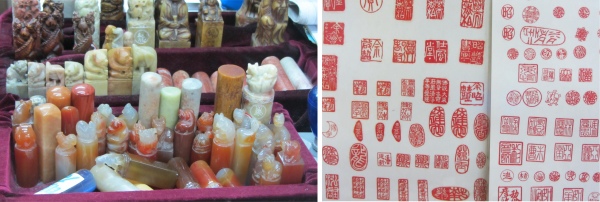 Chops and Typical Prints |
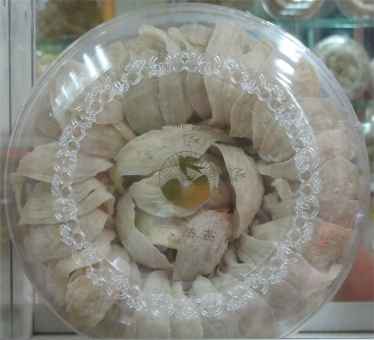 A Pack of Birds' Nests |
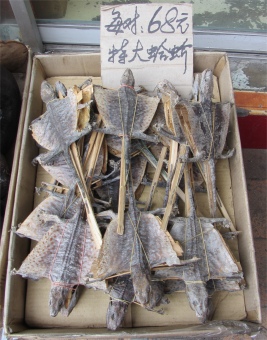 No Idea What These Creatures Are |
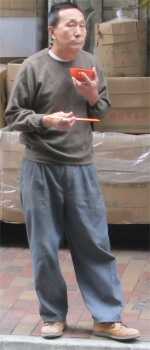 Lunch Time |
We picked up Des Voeux Road and headed west. On our way we stumbled across Li Yuen Street East and Li Yuen Street West, two parallel pedestrian lanes exemplifying small Chinese businesses, brimming with stalls selling clothing, jewellery and leather goods. Further along Des Voeux Road we came across many pawn shops that store items, and subtly different to western pawn shops, the goods are sold to stores if the customers are unable to pay up.
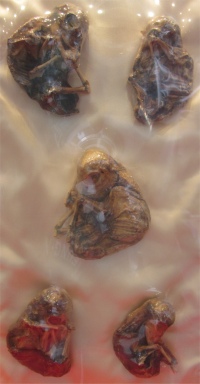 Deer Foetuses |
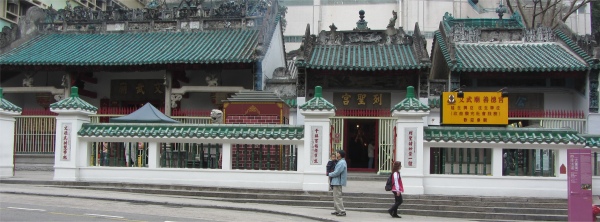 Lit Shing Kung, Man Mo Temple and Kung Sor |
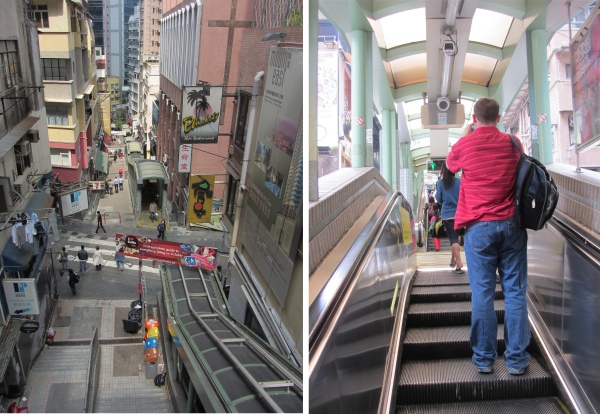 Mid-Levels Escalator |
 Bank of China |
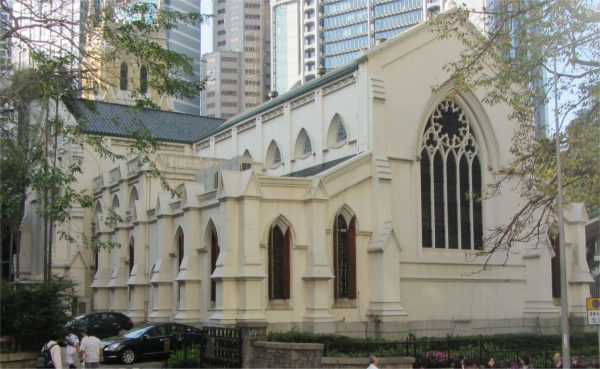 St John's Cathedral |
Picking up Hollywood Road, we proceeded past no end of what can be best described as antique shops, or junk shops, depending upon your point of view. Carved along the hillside, Hollywood Road was built in 1844 for the British regiment attached there and named after the holly wood trees that used to line the street. The road passed Possession Street where the Union Jack was first planted in 1841. We passed into Cat Street which used to be famous for its arts and crafts. Today, as many dealers have moved to the Cat Street Galleries (near Lok Ku Road) and, with the growth of new antique shops on Hollywood Road, Cat Street has become a flea market for junk collectors.
A side turn took us up Ladder Street, aptly named because the extremely steep flight of stairs resemble a ladder. Our destination was the Man Mo Temple, one of the oldest and most famous temples in Hong Kong.
 Narrow Tram |
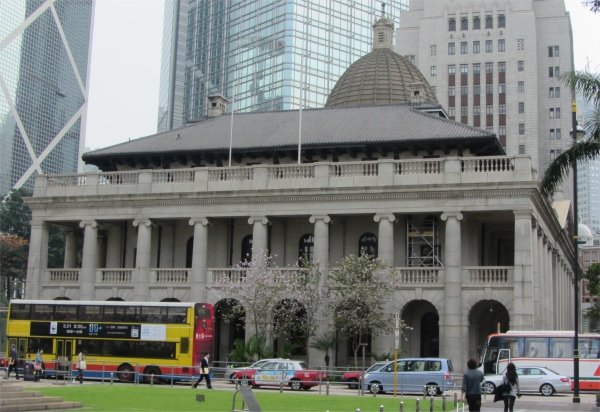 Legislative Council Building |
The compound is a fine example of traditional Chinese vernacular architecture. It is exquisitely decorated with ceramic figurines, granite carvings, wood carvings, plaster mouldings and murals, reflecting superb traditional craftsmanship. Giant incense cones are suspended from the ceiling, burnt as offerings by the worshippers, the smoke carrying their prayers to the spirit world. Fortune-tellers are also on hand to carry your money off to their private world too. Sadly, photography was not permitted.
We passed through SoHo (South of Hollywood Road). Soho is gaining a growing reputation as the place to seen partying, and is where we listened to the musicians the night before. A short distance further on we came to the Mid-Levels Escalator. This 800-metre hillside escalator starts from Connaught Road Central, runs to the Hang Seng Bank Building on Des Voeux Road Central, then passes through the Central Market and continues to climb past Hollywood Road to the prime Mid-levels residential district. It is actually a series of escalators and moving sidewalks, with 29 entrances and exits. Its primary function is to transport white-collar workers, who live in the Mid-Levels residential areas, to effortlessly commute to and from their work in the Central District and beyond. Thus the escalators convey downhill only during the morning rush-hour, and uphill from mid-morning. The free ride from Central to Conduit Road takes about 20 minutes, a lot quicker than walking up which usually takes forever. The longest covered outdoor escalator system in the world, the system took two and a half years and more than HKD205 million to build.
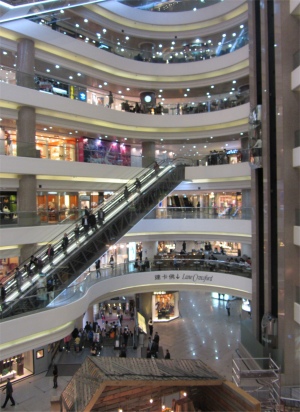 Inside Times Square Building |
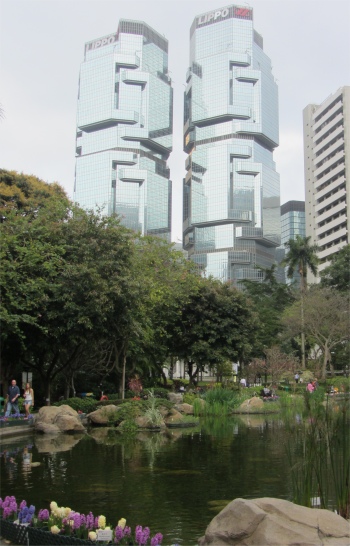 Lippo Buildings from Hong Kong Park |
Ambling down past sweet smelling flower beds, we made a hop, skip and a jump to St. John's Cathedral. This cream-and-white Gothic style building is the oldest ecclesiastical building in the city, inaugurated in 1849. This was an excellent place to rest our feet after our long hike.
From here it was a simple meander down through the concrete jungle to Statue Square. The concrete covered square is a large meeting place at weekends for Filipino nannies, housemaids and waitresses who work in the Special Administrative Region (SAR). Just as many Chinese in Britain send most of their earnings back home, so do the Filipinos working here. There is a dearth of statues here, Queen Victoria's statue having been moved to Victoria Park. The Cenotaph near here was erected in remembrance for those who sacrificed their lives in the First and Second World Wars. The largest "statues" visible from the square are the three main bank towers of Hong Kong: HSBC, Bank of China and the Standard Chartered.
Adjacent to Statue Square stands the Legislative Council (Legco) Building. The Goddess of Justice above the main entrance dates back 1912 when the building was originally opened as the Supreme Court. The neo-classical structure built of local pink-and-grey granite, with its Ionic columns and Chinese roof is typical of late-Victorian colonial architecture. The High Court has now moved to Admiralty.
We passed through Chater Garden, once the site of the Hong Kong Cricket Club, and now a "green lung", a popular haunt for tai chi practitioners. On nearby Des Voeux Road, quaint double-decker trams ran; as dear to the heart of Hong Kong people as Star Ferry. This colourful fleet had been rocking and rolling along the northern coast of the island since 1904.
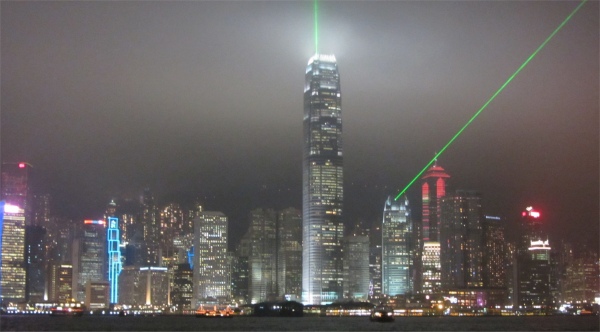 Laser Lights on Show |
Crossing Cotton Tree Drive, we reached Hong Kong Park. Like Kowloon Park, the grounds were once a housing area for soldiers. The park is packed with features such as: an aviary, greenhouse, fountain plaza, lily ponds, playgrounds, artificial waterfall, viewing tower, visual arts centre, museum, restaurant, indoor games hall and even a marriage registry. The aviary houses over 150 species of birds and visitors walk on a suspended wooden bridge around 10m above the ground to look at the birds perched in tropical greenery at eye level. Some people say it looks anything but natural. Still, it is beautiful in its own odd way, with high-rise buildings on one side and mountain greenery on the other. At weekends and auspicious days in the Chinese calendar, newlyweds can be found posing for pictures here.
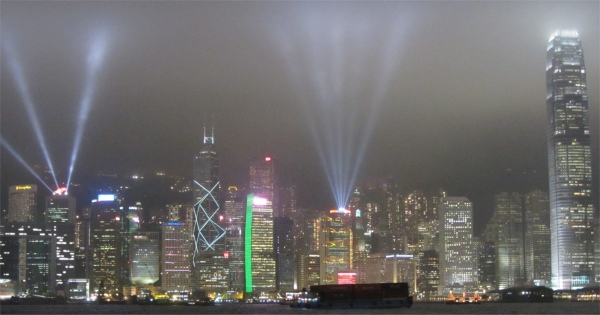 Even More Lights |
By now we had done enough hiking and were quite shattered. We had built up a decent appetite too. A small restaurant tempted us. Its Formica topped tables and plastic chairs very much reminded me of late 60s coffee bars in the UK, but despite its appearance, it was popular with everyday residents and business men alike.
We returned across to Kowloon, and found an empty slot on the promenade. At night, throngs of people head down to the waterfront to witness a nightly spectacular multimedia event, the Symphony of Lights, considered to be the world's largest sound-and-light show. Over and above the marvellous display of city lights, a very impressive laser and light show is projected from more than 40 key buildings on both sides of Victoria Harbour. The show starts promptly at 8pm, and runs for about 20 minutes - absolutely marvellous.
It was cold and windy during the light show, so afterwards we sensibly retired to a bar and reflected on the day.

